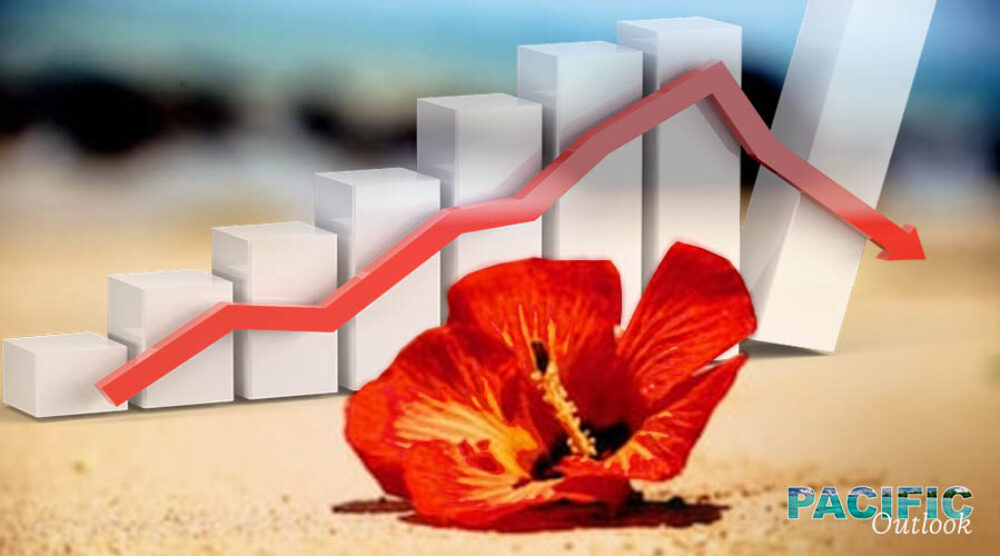The COVID-19 pandemic is creating havoc in Pacific island countries (PICs). Within eight months, countries in the region have seen their economies nose-dive to negative growth rates. It will take a long time before PICs fully recover from the impacts of the pandemic.
The region may have been spared the medical/health crisis—12 PICs are still “COVID-19 free”, but the economic fall-out is taking its toll on all countries. PICs expect substantial contraction in their economies in 2020. The International Monetary Fund (IMF)’s June economic outlook projects a -4.3 per cent contraction in growth in all PICs. A recent Pacific Trade Invest Australia business survey showed 90 per cent of businesses in the region reported declining revenue.
Border closures and travel restrictions have led to tourism operators closing or scaling down operations and laying off staff. Countries like Fiji, Palau, Cook Islands and Vanuatu that depend on tourism for up to 30 per cent of employment and foreign exchange receipts are badly affected.
The decline in overseas demand and commodity prices are hurting countries like Papua New Guinea and Solomon Islands that depend on commodity trade.
Loss of employment and shrinking remittance flows are creating hardship and suffering for families and communities across the region. For Tonga, Samoa and Marshall Islands who receive 40 per cent and 15 per cent of household incomes from remittance flows, this is bad news.
PIC Responses
In response to the impacts of the pandemic, PICs undertook measures to protect their citizens and economies. The bulk of the responses were borne by governments with support from development partners. Most PIC governments introduced stimulus packages to assist individuals, households and businesses affected by the economic fallout of the pandemic. These packages target the immediate impact of the crisis, the short-term recovery phase and the medium to long-term recovery stage. However, given the limited fiscal and monetary space in most PICs, continuous government support may not be possible.
Graph 1: Stimulus packages of PICs as % of GDP

Source: IMF June Economic Outlook
In designing and framing the stimulus packages, two important factors are relevant in the Pacific context. First, whether the country has fiscal space and secondly, its ability to access support from development partners.
Fiscal space enables the country to raise resources to finance the package. Does the country have adequate savings from previous surpluses that it can draw on? Is there room for the country to borrow without endangering its debt position? Most PICs already have limited fiscal space because of their high debt positions and debt-stress levels.
Access to development partners’ (bilateral and multilateral) support enables the country to tap grant funds or concessional credit. Some PICs that recently graduated from ‘least developing country’ (LDC) status now face additional difficulties accessing concessional funding.
There were also regional responses. Responses such as the Pacific Humanitarian Pathway on COVID-19, has shown that innovative solutions to deal with the pandemic are possible.
At the 2020 Forum Economic Ministers Meeting (FEMM) on 11-12 August, Ministers endorsed the FEMM outcomes and issued a statement on the Economic and Social Impacts of COVID-19 on the Pacific. One of the outcomes endorsed by FEMM is a proposal to establish a ‘regional COVID-19 Economic Recovery Taskforce to lead a coordinated response that address COVID-19 economic priorities, including health, digital economy and connectivity, food security and agriculture and building resilient and sustainable economies.’
Collaborative efforts between regional governments and private sector stakeholders to build resilient economies that survive future pandemics and other disasters are critical.
Success or failure?
While it is still too soon to assess the success of stimulus packages implemented by PICs, early anecdotal evidence suggest that the packages may be working. However, the full extent of the success will only become clearer in the months ahead.
With COVID-19 still raging around the world, PICs need to keep monitoring the evolving economic impacts of the pandemic to enable them to design further innovative responses. The Economic Recovery Taskforce, once established and operational, would be another mechanism in the region’s responses against the pandemic.

Denton Rarawa is a former governor of the Central Bank of Solomon Islands and currently Senior Adviser-Economics at the Pacific Islands Forum Secretariat. The views expressed in this article are that of the author and do not necessarily represent the position of the Pacific Islands Forum Secretariat. For more articles on PIC economies, see Pacific Forum.








